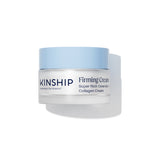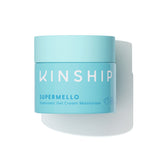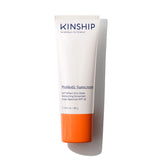Exfoliating sensitive skin takes a little extra care, but the effects are worth it.
Sensitive skin can react easily to different things, and using the wrong exfoliation methods can do more harm than good.
But with a gentle approach, exfoliation can work wonders. This essential skincare step can improve texture and get rid of dead skin cells that can make your skin look dull.
The key is to be kind to your skin and use gentle methods to avoid irritation.
We know how important it is to care for sensitive skin properly. With the right techniques, exfoliation can keep your skin radiant and healthy without compromising its delicate barrier.

Understanding Sensitive Skin and Exfoliation
Sensitive skin often reacts to many factors. For example, weather changes, harsh ingredients, or friction can all worsen existing skin conditions.
When exfoliating, it is important to be careful. Being too hasty or using the wrong method can cause irritation, redness, or even breakouts.
To protect your skin and keep it healthy, we recommend using gentle products to soothe and strengthen your skin barrier.
For example, Self Reflect Sunscreen is a great choice for sun protection. It is also gentle enough to avoid irritation.
After exfoliating, applying a moisturizer like Supermello Gel Cream helps lock in hydration and soothe your skin.
And if you need more collagen, Super Rich has multiple ceramides for a stronger moisture barrier.
Recommended Products
Tips for Exfoliating Sensitive Skin

To effectively exfoliate sensitive skin, focus on methods and skincare routines that are gentle and suitable for your skin's unique needs.
Below, we share seven essential tips to help exfoliate your skin without causing irritation.
1. Choose the Right Exfoliant
Choosing the right exfoliant makes all the difference. We recommend going for a gentle exfoliant specially made for sensitive skin.
If you prefer a physical exfoliant, look for products with small, non-abrasive particles that will not scratch your skin.
For chemical exfoliants, try a product with a low concentration of lactic acid. Lactic acid is ideal because it's milder than options like glycolic acid.
Here is a detailed list of exfoliants that are suitable for sensitive skin:
- Lactic Acid: Lactic acid is a gentle alpha hydroxy acid (AHA) derived from milk. It exfoliates while also hydrating the skin, and is an ideal chemical exfoliant for sensitive skin.
- Mandelic Acid: Another AHA, mandelic acid has a larger molecular size, making it less likely to penetrate deeply and cause irritation. It provides a mild exfoliation that is perfect for sensitive skin types.
- Polyhydroxy Acids (PHAs): PHAs, like gluconolactone, are often recommended for sensitive skin because they have a larger molecular size. This means that they are less irritating while still effective for exfoliating.
- Beta Hydroxy Acid (BHA) – Salicylic Acid (Low Concentration): Although BHAs can be harsh for some skin types, salicylic acid in low concentrations can be great for sensitive, acne-prone skin. It gently unclogs pores without causing significant irritation.
- Enzyme Exfoliants: Enzymes from papaya (papain) or pineapple (bromelain) gently dissolve dead skin cells without abrasive particles. They are a great option for very reactive skin.
- Jojoba Beads: If you prefer a physical exfoliant, jojoba beads are an excellent choice. Their smooth and round shape helps minimize the risk of micro tears in the skin.
With these ingredients, you can exfoliate without causing damage. They gently dissolve dead skin cells and leave your skin smooth and healthy.
2. Patch Test Before Full Application
It is vital to patch-test new exfoliating products before applying them to your face. We cannot stress this enough.
Sensitive skin can react unexpectedly, and patch testing helps determine if a product is suitable without risking irritation.
Apply a small amount of the exfoliant to a less noticeable area, like behind your ear or along your jawline. Then, watch for any reactions over the next 24 hours.
Starting cautiously with exfoliants minimizes the risk of irritation and ensures the product is a good fit for your skin.
3. Start Slowly and Increase Gradually
With sensitive skin, less is always more – especially when it comes to exfoliating. We suggest starting with exfoliating just once a week to see how your skin responds.
This gradual approach helps prevent over-exfoliation, which can strip your skin of its natural moisture and make it more sensitive.
If your skin handles exfoliation well, you can slowly increase the frequency to twice a week.
However, you should always carefully monitor your skin. Any sign of redness, dryness, or discomfort is a sign to reduce the exfoliation frequency.
Taking it slow and observing how your skin reacts will help you find the perfect balance. A balanced routine will ensure your skin stays healthy and glowing without unnecessary irritation.
4. Use Lukewarm Water and Gentle Motions
When exfoliating, it is important to use lukewarm water. Hot water can easily irritate sensitive skin, so sticking with lukewarm water helps keep your skin comfortable.
As you apply your exfoliant, use gentle, circular motions. This helps avoid unnecessary friction and minimizes the risk of damaging your skin.
We recommend using your fingers for this process, as they provide a naturally soft and gentle touch that is perfect for sensitive skin.
Avoid vigorous scrubbing at all costs – gentle is key! Vigorous scrubbing can harm your skin barrier and lead to increased sensitivity, which is exactly what we want to prevent.
5. Avoid Multiple Active Ingredients
Using too many active ingredients at once can easily overwhelm sensitive skin and lead to irritation.
If you are using an acid-based exfoliant, it is best to avoid pairing it with other strong actives like retinol or vitamin C in the same routine.
Keep your skincare routine simple, especially when exfoliating, for balanced and comfortable skin. This will also reduce the risk of irritation and help maintain a healthy skin barrier.
6. Follow Up with Soothing Products
After exfoliating, remember to follow up with hydrating and soothing products to help your skin recover and restore its barrier.
Cap off your exfoliation with products containing the following soothing ingredients:
- Hyaluronic Acid: This powerful ingredient draws moisture into your skin, keeping it hydrated and reducing the risk of dryness and irritation.
- Chamomile Extract: Known for its calming properties, chamomile helps soothe irritated skin and reduce redness after exfoliation.
- Aloe Vera: Aloe vera gel is famous for its calming and hydrating effects. It helps cool the skin and reduce irritation without leaving a greasy residue.
- Centella Asiatica (Cica): Often found in products for sensitive skin, centella asiatica helps repair the skin barrier and reduce inflammation.
- Panthenol (Provitamin B5): Panthenol is great for calming the skin and supporting healing, making it an ideal ingredient to use after exfoliation.
- Ceramides: Ceramides help restore the skin barrier and lock in moisture. They are a great ingredient for keeping sensitive skin healthy and hydrated after exfoliation.
- Jojoba Oil: A lightweight oil that mimics the skin's natural sebum, jojoba oil provides hydration without clogging pores. It is suitable for all skin types, especially sensitive skin.
7. Listen to Your Skin
The key to effectively exfoliating sensitive skin is to pay close attention to how your skin reacts to a product.
If you notice redness, dryness, or increased sensitivity after exfoliation, it might be a sign that your skin needs a break.
When this happens, try reducing the frequency of exfoliation or switching to a gentler product.
Sensitive skin needs careful attention, and adapting your routine based on how your skin reacts ensures that you keep it healthy without causing harm.
Additional Skincare Practices for Sensitive Skin

Apart from exfoliation, there are several other skincare practices for your skincare routine for sensitive skin that can help sensitive skin thrive.
Here is a detailed list of additional skincare practices for sensitive skin.
- Moisturizing Twice Daily: Keeping your skin well-moisturized is key to maintaining a healthy barrier. Look for moisturizers with ceramides, glycerin, or squalane for lasting hydration. Using Kinship products can provide a gentle, effective way to keep your skin hydrated and happy.
- Using Sunscreen Daily: Sensitive skin is more vulnerable to sun damage. Use a mineral sunscreen with zinc oxide or titanium dioxide. These ingredients are less likely to cause irritation than chemical sunscreens.
- Incorporating Calming Masks: Using calming masks once or twice a week can help soothe the skin and reduce inflammation. Look for masks with ingredients like aloe vera, centella asiatica, or oatmeal.
- Avoiding Fragrances and Harsh Chemicals: Fragrances and harsh chemicals can be major irritants for sensitive skin. We recommend using fragrance-free and hypoallergenic products to reduce the risk of reactions.
- Maintaining a Consistent Routine: Sensitive skin tends to respond better to a consistent skincare routine order. Avoid frequently changing products, as this can disrupt your skin's balance and cause irritation.
- Gentle Cleansing: Use a gentle, sulfate-free cleanser to avoid stripping your skin of natural oils. Over-cleansing can weaken your skin barrier and lead to increased sensitivity.
These practices, combined with gentle exfoliation, can greatly improve the overall health and appearance of your sensitive skin.
Frequently Asked Questions (FAQs)
What Are the Signs That Exfoliation Is Too Harsh for Sensitive Skin?
If your skin starts to feel irritated, tight, or uncomfortable after exfoliating, it may be a sign that your current routine is too harsh.
Symptoms like skin inflammation and redness, increased dryness, stinging, and unexpected breakouts can indicate that your skin is overwhelmed.
When this happens, cut back on how often you exfoliate or switch to a milder product that suits your skin better.
How Can I Help My Skin Recover After Over-Exfoliation?
To help your skin recover after over-exfoliation, we recommend applying a cold compress to the affected area. Next, apply a soothing cream with ingredients like panthenol or centella asiatica.
Avoid applying makeup and other potential irritants until your skin fully recovers.
Additionally, a gentle, barrier-repair moisturizer can help speed up the healing process.
When Should You Avoid Exfoliating Sensitive Skin?
We recommend avoiding exfoliation if your skin is already irritated, sunburned, or experiencing flare-ups from conditions like eczema or rosacea.
Only exfoliate when your skin is calm and healthy, as this reduces the risk of worsening any issues and ensures better results.
Wrap-Up on How to Exfoliate Sensitive Skin
Exfoliating sensitive skin is all about taking a thoughtful and gentle approach.
By choosing the right products, starting slowly, and paying close attention to how your skin reacts, you can enjoy all the wonderful benefits of exfoliation without compromising your skin's health.
It is important to listen to your skin and give it the care it needs to ensure a positive exfoliation experience.
Remember, consistency and patience are key – effective exfoliation for sensitive skin means understanding and respecting your skin's unique needs.
With these tips, we hope you feel more confident in your ability to care for your sensitive skin.
By being gentle and mindful, you can enjoy the benefits of exfoliation and achieve the glowing, healthy skin you deserve!



